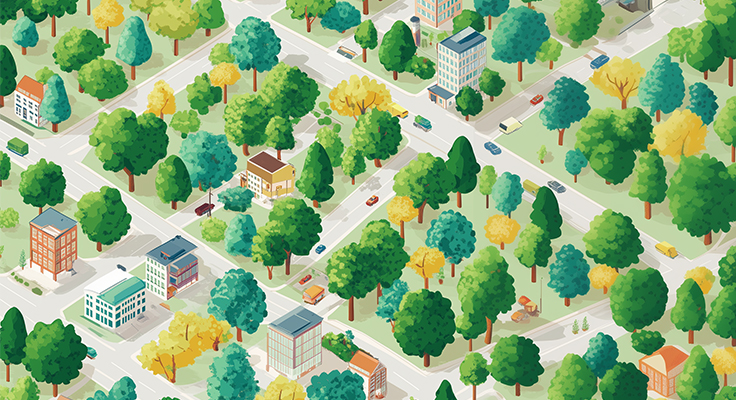| Anna Nilson Törnqvist

Urban forests play a vital role in moderating temperatures within city environments, offering an effective solution to the urban heat island effect. As cities expand, natural landscapes are often replaced by buildings, roads, and other heat-absorbing surfaces like concrete and asphalt. This transformation leads to cities becoming significantly hotter than their surrounding rural areas, especially during summer months. Urban forests provide a natural means to counteract these temperature increases, making cities more comfortable and resilient.
How Trees Regulate Heat in Cities
The cooling effect of urban forests is largely achieved through shading and transpiration. Trees create shaded areas, which reduce the amount of sunlight that reaches buildings, streets, and other surfaces, helping to lower temperatures. By covering these surfaces with a canopy, urban forests minimize the absorption and re-radiation of heat, a major factor contributing to urban heat islands. As a result, temperatures in shaded areas can be significantly lower compared to unshaded parts of the city.
In addition to shading, trees also cool the environment through a process called transpiration. As trees absorb water through their roots, they release water vapor through their leaves, which cools the surrounding air. This natural cooling process is similar to the evaporation of sweat in humans and helps create cooler microclimates within urban areas. These cooler pockets reduce the overall temperature of the city, making them critical components in mitigating extreme heat.
Addressing the Urban Heat Island Effect
The urban heat island effect not only makes cities warmer but also has a cascading impact on energy use and public health. Higher temperatures increase the demand for air conditioning, leading to higher energy consumption and greater greenhouse gas emissions. This cycle contributes to both climate change and economic burdens on city residents. By planting and maintaining urban forests, cities can reduce temperatures naturally, decreasing reliance on artificial cooling and subsequently lowering energy costs and emissions.
Well-designed urban forests can lower ambient temperatures by several degrees, with studies showing that well-vegetated areas in cities can be up to 10 degrees Celsius cooler than their surroundings. This is particularly important during heatwaves when urban temperatures can rise to dangerous levels, putting vulnerable populations at risk. Urban forests offer an effective, sustainable strategy to reduce these risks and make cities safer and more livable.
Planning for Effective Heat Mitigation
While the benefits of urban forests in regulating heat are clear, achieving their full potential requires strategic planning and long-term commitment. City planners must integrate tree-planting initiatives into urban development projects, ensuring that trees are placed where they can provide the most cooling benefits, such as along streets, near buildings, and in public spaces. Selection of tree species also plays a role; drought-resistant and native species often perform better, providing resilience in the face of changing climate patterns.
In addition to planting, urban forests need ongoing maintenance to thrive. This includes watering, pruning, and monitoring for pests or diseases. Without proper care, trees can become stressed or damaged, diminishing their ability to provide cooling effects. Adequate investment in these green spaces, from both local governments and community organizations, is essential to sustain the cooling benefits over the long term.
The Future of Urban Forests in Climate Adaptation
As climate change leads to increasingly intense and frequent heatwaves, the need for urban forests will only grow. By prioritizing the integration of green spaces into urban planning, cities can effectively combat rising temperatures and adapt to future climate challenges. Urban forests offer a natural, low-cost solution to urban heat, providing sustainable cooling effects and enhancing the quality of urban life.
Investing in the growth and maintenance of these green spaces is not just an environmental measure but a necessary adaptation strategy for cities worldwide. By doing so, cities can ensure a more comfortable, safe, and resilient future for their inhabitants.

